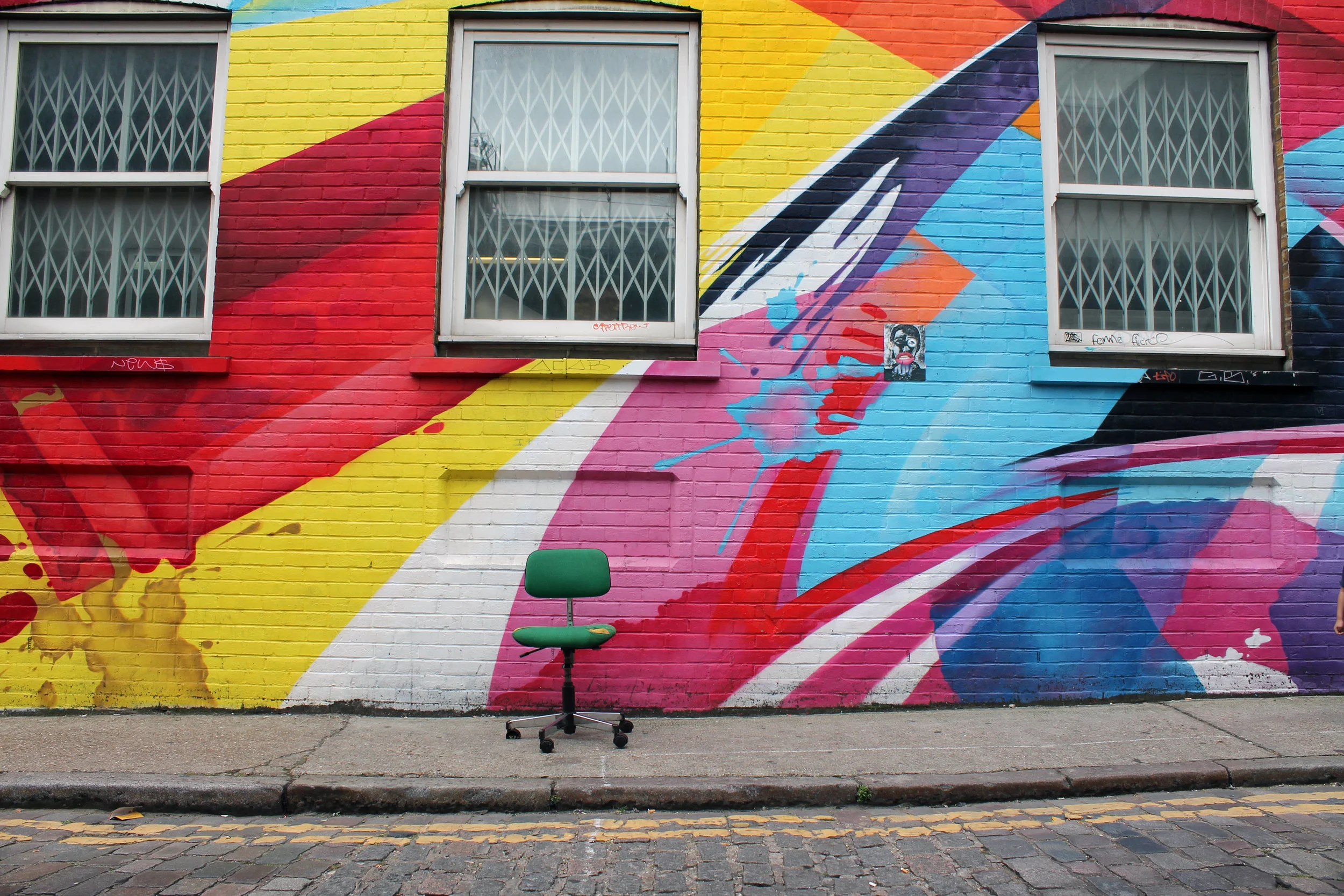This post shows you how to communicate good and do other stuff good too… basically how NOT to be a repetitive parrot! I’ve tried to articulate the very core of what heapswhitty offers; how I work; with invaluable advice for creative freelancers and the professionals hiring them.
'Creative communication' is a term you don't often hear in marketing, despite the fact that it’s actually at the root of every awesome marketing campaign. Now, I obviously haven't tested that theory globally, or even on a national level - but hear me out - as this is something that I truly believe in with my heart and my soul (pretty sure I've got one of those).
WTF IS CREATIVE COMMUNICATION?
It's anything but a buzzword. I will try my best to articulate what I consider “creative communication”, which is the inspiration and driving force for my business, my writing style, my drawings, my life...
I have worked in marketing and online production for the last 7 years, and I've therefore been to a mass of brainstorming sessions, branding workshops, networking conferences, immersion days and monthly catch-ups. Yet, in all my time spent in those collectives NOT ONCE was the concept of creatively communicating a message to achieve an objective on the agenda or action list. NOT ONCE was it considered a viable strategy. This may be because it's pretty difficult to rally a room full of deadline-driven marketeers into thinking outside the box. Or it might be because forced creativity is simply the worst. Ugh. The worst.
So in my years spent as an evil markeeter, cackling in my tower of puns and exaggerated USPs, what I've noticed is that there is a general reluctance to approach a campaign creatively. And I think this comes from the majority of those involved in a project not actually having any confidence in this style of thinking. Or in their own creative juices... And why would they? Teams are trained to be results-driven, answerable to the "powers that be" and overwhelmingly doubtful of their own creative abilities, having never been trained, or praised, in this area before.
This is sad for everyone involved. For a creative thinker it is so, so frustrating, especially when one of the best ways to solve an important problem is with creativity. Just ask Bear Grylls, as he gorges on a raw salmon before using its carcass to knit himself a codpiece that will float him down the river.
FUSING THE TWO
Even if you're confident in your creative ideas and abilities, how can you fuse this with communication in the workplace? What makes a good communicator is an ‘ability not to be fazed by the more problematic or offbeat aspects of our characters', but rather, to accept that we’re actually alright and deserve the goodwill of others, so present with a balance of patience and imagination.
This can be tricky if you consider the contradictions that make up a creative's mind... mindfulness vs daydreaming. Openness vs sensitivity. Solitude vs collaboration. Scott Barry Kaufman's research can help you find the middle ground in the book, Wired to Create.
In the professional world, I do understand that there are budgets to follow, objectives to fulfil and performance reports to deliver. But how much longer are we going to follow the cringey "if it aint broke don't fix it" attitude? We need to start innovating as the norm - more than ever before! If you are bored by repeating a campaign, irked by its cheesy puns and 2D happy/sexy Photoshopped models and lifeless copy - imagine how your customers feel.
THE SOLUTION
It's creative communication. On every level. In every crevice (except that one).
I am sure there are several definitions floating around, but here's the heapswhitty one:
creative communication:
The commitment to connecting with both the core message and your audience, acting as a thoughtful translator between the two. This link allows you to share something in a way that makes the recipient feel like they’re the first person to experience it; your message is fresh, exciting and worth their time. In return, you seek acknowledgement from your audience; a genuine reaction that what you have shared has changed them, for the better. Most importantly – creative communication is applied at every level. From conversations with an individual in a beer garden, to writing birthday cards and emails, social media profiles, to team presentations, running workshops or addressing a room of TED enthusiasts, or even leading a country. To practice creative communication is to deliver a message in a way it has never been delivered before.
Seeing that we’re all pretty unique, how hard can that brief be?
THE ART OF LISTENING
Well… if you consider the grey stalls, filter coffee and monotonous meetings of today’s average office – it’s bloody hard! Add to this Hemingway’s idea that “most people never listen anyway”, which is excruciatingly evident in the 21st century office environment, and you soon have an (almost) impossible challenge. Even if you’re communicating well, who’s to say people will listen?
I tend to agree with De Botton here, who wrote that "Good listeners are no less rare or important than good communicators". He may have been talking about love and relationships, but this recipe for success; a synergy between communicating and listening well; equally applies to business.
There is a snazzy blog called Crew that dabbles in defining creative communication too. In it, writer Leon Jacobs offers advice on outsourcing the right freelancer to get your brand message out there creatively:
"You need to understand that creative professionals come in different shapes and sizes. Each brings their own unique perspective and set of skills to the table and it is important to use the right person for the right job... Remember, this is the face of your company you’re dealing with."
It's important that this concept/lifestyle of creative communication has a little time to air. After all, we've never talked so openly about this before, it's new to the both of us... I simply suggest that you open up your mind to the idea of flipping how you approach your projects as a marketing employee or freelance copywriter.
Take any steps you can to introduce imagination to your working attitude, colleagues and environment:
- BE that person who puts a crazy idea forward in a meeting – it’s useless stuck in your head and if it flops you’ll get over it.
- HIRE a freelancer who actually talks to you about your project – engagement with your goal enriches what they produce.
- PUT it out there only if you're proud of it – avoid brand damage. If you don’t think it’s great, why would anyone else?
Have you seen a brand or brainy individual using creative communication?
Tweet me @heapswhitty mentioning #creativecommunication and I'll share it with the hW network!
Whitney.





